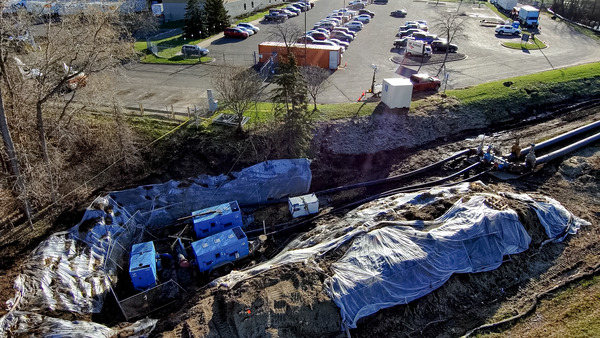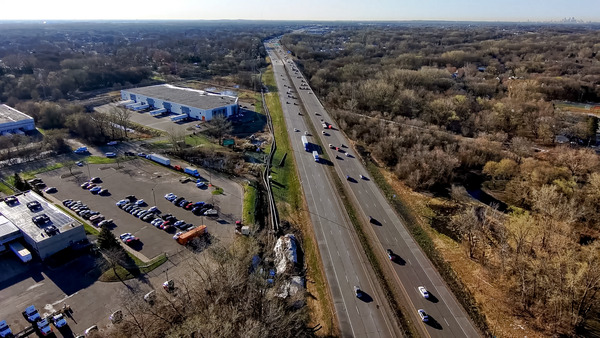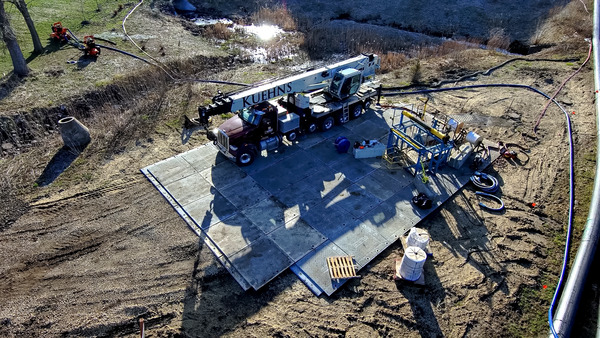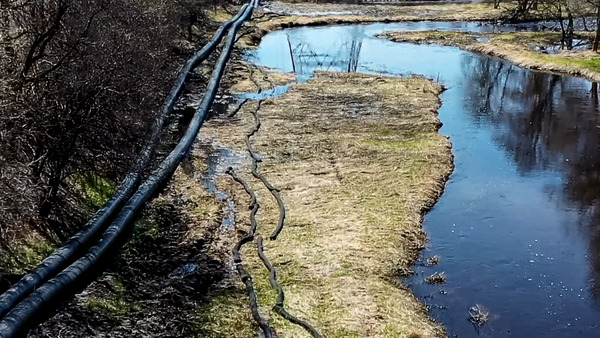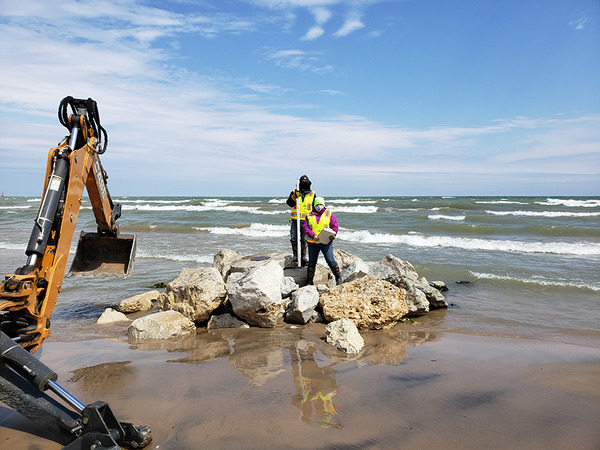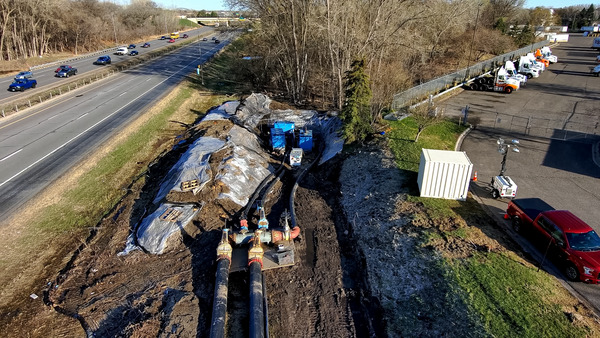
Background
The Metropolitan Council Environmental Services (MCES) sought to rehabilitate the existing Coon Rapids 48-inch reinforced concrete pipe (RCP) gravity interceptor and manholes due to significant chemical corrosion and infiltration. Since the pipe’s installation in 1964, there has been significant development in the area. As a result, the pipeline runs through the much-used Erlandson Park, as well as residential backyards and a manufactured home community. Due to previous experience with similar MCES projects, Foth was tasked with pipe rehabilitation design, temporary conveyance alignment selection, limited site access design, private utility coordination, environmental permitting and protection, and public agency coordination.
Approach
Cured-in-place pipe (CIPP) lining was chosen for rehabilitation of the interceptor because it is a long-term corrosion solution that adds an estimated 50 years of life to the pipeline. As a trenchless technology, it also minimized impacts to neighboring homes and the environmentally sensitive Erlandson Park and Coon Creek areas. This was especially important because two protected species — the Blanding’s Turtle and the Rusty Patch Bumblebee — are both found within the park. Tree removal work for the project was coordinated with the City of Coon Rapids and involved special consideration for removal of ash trees impacted by the Emerald Ash Borer, as well as special protection for other tree species.
Temporary conveyance for the project crossed the park, adjacent neighborhoods, and MnDOT Highway 10. It also paralleled Xcel Energy transmission lines and a high-traffic Burlington Northern Santa Fe rail line and crossed two large-diameter high-pressure CenterPoint Energy gas mains. The gas mains provide fuel to the City of Minneapolis power plant and required special protection due to their pressure — which reaches 600 psi in the 20-inch main — and the significant number of customers who rely on the power plant’s service.
Special consideration for temporary conveyance alignment included minimizing street, trail, and wetland impacts. Additionally, diesel conveyance pumps were located away from residences to minimize noise disruptions. Coordination with the MnDOT, railroad, and private utility owners was a significant element of the project. Multiple public meetings were held to explain sequencing of work to area residents.
Results
Rehabilitation began in February 2023 and included 8,200 LF of CIPP lining for 48-inch, 24-inch, and 18-inch pipes. The work also included 20 cured-in-place manhole (CIPMH) liners. Following completion of the pipe work, pavement, sidewalks, and landscaping were restored in the project area. Work was broken into two phases to minimize the length of the temporary conveyance system, limit the duration of resident impacts, and shorten the length of trail closures within the park.
Markets: Municipalities
Services: Water and Wastewater

